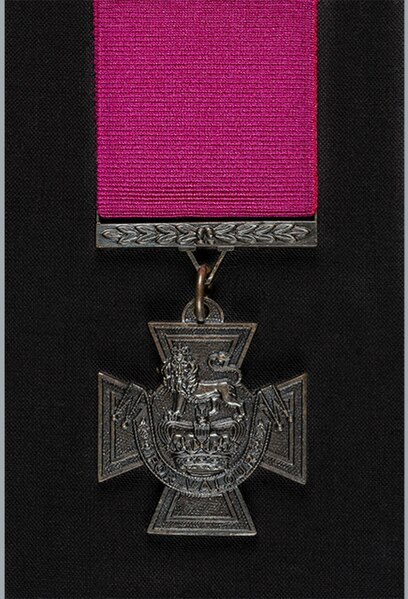Flying Officer Lloyd Allan Trigg VC DFC, of Houhora, New Zealand, was a pilot in the RNZAF during World War II. He was a posthumous recipient of the Victoria Cross, the highest award for gallantry in the face of the enemy for British and Commonwealth armed forces, and received the award for pressing home an attack on a German U-boat in August 1943. He was killed in the action. His award is unique, as it was awarded on evidence solely provided by the enemy, for an action in which there were no surviving Allied witnesses to corroborate his gallantry.
Lloyd Trigg
The intelligence officer of HMS Clarkia inspects the dinghy from Trigg's crashed Liberator, used by the survivors of the destroyed U-boat.
The Victoria Cross (VC) is the highest and most prestigious decoration of the British honours system. It is awarded for valour "in the presence of the enemy" to members of the British Armed Forces and may be awarded posthumously. It was previously awarded by countries of the Commonwealth of Nations, most of which have established their own honours systems and no longer recommend British honours. It may be awarded to a person of any military rank in any service and to civilians under military command. No civilian has received the award since 1879. Since the first awards were presented by Queen Victoria in 1857, two thirds of all awards have been personally presented by the British monarch. The investitures are usually held at Buckingham Palace.
Obverse of the cross; ribbon: 1+1⁄2 inches (38 mm), crimson (blue ribbon for naval awards 1856–1918)
The front and back of Edward Holland's VC
The obverse of William Johnstone's VC showing the dark blue ribbon for pre-1918 awards to naval personnel
Victoria Cross as it appears on Commonwealth War Graves Commission headstones.






